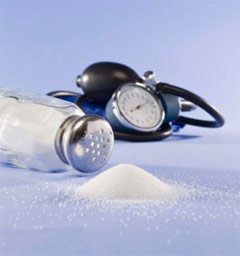|
|
Key Diet & Lifestyle Factors for a Disease Free 2014
 According
to WHO, coronary
artery disease (CAD),
ischemic stroke, diabetes,
and some specific cancers, which were common only in high-income countries, are
now becoming the dominant sources of morbidity and mortality worldwide. The
striking changes in disease rates within countries over time and among migrating
populations indicate that the primary determinants of these diseases are not
genetic but environmental factors, including diet and
lifestyle. According
to WHO, coronary
artery disease (CAD),
ischemic stroke, diabetes,
and some specific cancers, which were common only in high-income countries, are
now becoming the dominant sources of morbidity and mortality worldwide. The
striking changes in disease rates within countries over time and among migrating
populations indicate that the primary determinants of these diseases are not
genetic but environmental factors, including diet and
lifestyle.
Individual as well as community interventions need to be called upon aimed at
changing diet and lifestyle factors to build a disease free 2014.
-
Avoid Smoking: Preventing smoking initiation
or cessation is the single most important way to prevent CVD and cancer.
Avoiding the use of smokeless tobacco will also prevent a good deal of oral
cancer. Smoking can make it harder for a woman to become pregnant and can
affect her baby's health before and after birth. Use this time of the year
to get rid of all cigarettes and tobacco paraphernalia from your home,
office and car. Also think about previous quit attempts, and what worked and
what didn't. And when you hit the big day, don't smoke even a puff. Distract
yourself from urges to smoke by taking a walk or indulging in some other
exercise. If you're stressed, take a hot bath or do something else that
gives you pleasure. Drink plenty of water.
This will help take the edge off. Women smokers face a 17.8 times greater
risk of dying of lung cancer, than women who do not smoke, a death rate that
is 50 percent higher than the estimates reported in the 1980s, according to
Dr. Prabhat Jha of the Center for Global Health Research in Toronto and his
colleagues.
-
Maintain a Healthy Weight: Bodyweight should ideally not increase by more
than 2 or 3 kilograms after age 20 to maintain optimal health (Willett, Dietz,
and Colditz 1999). Thus, a desirable weight for most people should be within the BMI range
of 18.5 to 25.0, and preferably less than 23. To lose weight or maintain a
healthy weight, a woman should eat more low-energy-dense foods. Low-energy-dense
foods (such as vegetables and fruits) contain few calories per unit volume of
food so that one can eat a large volume of it (for example, lettuce) without
taking in many calories. Eat less of the high-energy-dense foods such as fats,
egg yolks, fried foods, sweets, and high-fat salad dressings.
-
 Maintain
Daily Physical Activity: Regular physical activity is a key element in
weight control and prevention of obesity (IARC 2002; Swinburn and others 2004).
For example, among middle-aged West African women, more walking was associated
with a three-unit lower BMI (Sobngwi, Gautier, and Mbanya 2003), and in China,
car owners are 80 percent more likely to be obese (Hu 2002). Besides, regular
physical activity reduces the risk of CAD, stroke, type 2 diabetes, colon and
breast cancer, osteoporotic fractures, osteoarthritis, depression, and erectile
dysfunction. AHA Recommendation for exercise include, at least 30 minutes of
moderate-intensity aerobic activity at least 5 days per week for a total of 150
min/week, or at least 25 minutes of vigorous aerobic activity at least 3 days
per week for a total of 75; or a combination of the two, and moderate to high
intensity muscle-strengthening activity at least 2 or more days per week for
additional health benefits. Maintain
Daily Physical Activity: Regular physical activity is a key element in
weight control and prevention of obesity (IARC 2002; Swinburn and others 2004).
For example, among middle-aged West African women, more walking was associated
with a three-unit lower BMI (Sobngwi, Gautier, and Mbanya 2003), and in China,
car owners are 80 percent more likely to be obese (Hu 2002). Besides, regular
physical activity reduces the risk of CAD, stroke, type 2 diabetes, colon and
breast cancer, osteoporotic fractures, osteoarthritis, depression, and erectile
dysfunction. AHA Recommendation for exercise include, at least 30 minutes of
moderate-intensity aerobic activity at least 5 days per week for a total of 150
min/week, or at least 25 minutes of vigorous aerobic activity at least 3 days
per week for a total of 75; or a combination of the two, and moderate to high
intensity muscle-strengthening activity at least 2 or more days per week for
additional health benefits.
-
Replace Saturated and Trans fats with Unsaturated fats, including
sources of omega-3
fatty acids: Replacing saturated fats with unsaturated fats will reduce
the risk of CAD (F. B. Hu and Willett 2002; Institute of Medicine 2002; WHO
and FAO 2003) by reducing serum low-density lipoprotein (LDL) cholesterol.
Also, polyunsaturated fats (including the long-chain omega-3 fish oils and
probably alpha-linoleic acid, the primary plant omega-3 fatty acid) can
prevent ventricular arrhythmias and thereby reduce fatal CAD. The average
woman should eat no more than 20g of saturated fat a day. Also, trans fats
should make up no more than 2% of the energy (kJ/kcal) you get from your
diet. For adults, this is no more than about 5g a day.
-
Limit Consumption of Sugar and Sugar-based Beverages: Sugar (free
sugars refined from sugarcane or sugar beets and high-fructose corn
sweeteners) has no nutritional value except for calories and, thus, has
negative health implications for those at risk of overweight. Furthermore,
sugar contributes to the dietary glycemic load, which exacerbates the
metabolic syndrome and is related to the risk of diabetes and CAD (F. B. Hu,
van Dam, and Liu 2001; F. B. Hu and Willett 2002; Schulze and others 2004).
WHO suggests an upper limit of 10 percent of energy from sugar, but lower
intakes are usually desirable because of the adverse metabolic effects and
empty calories.
-
Consume Cereal in their whole-grain, high-fiber form. High
consumption of refined starches exacerbates the metabolic syndrome and is
associated with higher risks of CAD (F. B. Hu and Willett 2002) and type 2
diabetes (F. B. Hu, van Dam, and Liu 2001). On the other hand, consumption
of fiber from cereal products has consistently been associated with lower
risks of CAD and type 2 diabetes (F. B. Hu, van Dam, and Liu 2001; F. B. Hu
and Willett 2002), which may be because of both the fiber itself and the
vitamins and minerals naturally present in whole grains. Secondly, higher
consumption of dietary fiber appears to facilitate weight control (Swinburn
and others 2004) and helps prevent constipation.
-
 Limit
Sodium Intake: WHO has suggested
an upper limit of 1.7 grams of sodium per day (5 grams of salt per day) (WHO and
FAO 2003). In 2014, reduce your dailysodium intake
to less than 2,300 milligrams (mg) and further reduce intake to 1,500 mg if you
are 51 and older and those of any age who are African American or have
hypertension, diabetes, or chronic kidney disease. The 1,500 mg recommendation
applies to about half of the U.S. population, including children, and the
majority of adults. Limit
Sodium Intake: WHO has suggested
an upper limit of 1.7 grams of sodium per day (5 grams of salt per day) (WHO and
FAO 2003). In 2014, reduce your dailysodium intake
to less than 2,300 milligrams (mg) and further reduce intake to 1,500 mg if you
are 51 and older and those of any age who are African American or have
hypertension, diabetes, or chronic kidney disease. The 1,500 mg recommendation
applies to about half of the U.S. population, including children, and the
majority of adults.
-
Avoid Consumption of Excess Calories: Know
what you�re eating. Everyone knows about the typical culprits (marshmallows,
soda, jellybeans, etc.), but even �healthful� food items such as energy
drinks, protein bars and flavored water have a lot empty calories. Look for
high-fructose corn syrup, enriched and bleached flour, artificial colorings,
monosodium glutamate (MSG), sodium nitrate and nitrites. All of these are to
be avoided if possible. Also, a good rule of thumb is to stay away from
anything with more than 10 ingredients; this means avoiding most processed
foods.
Dietary Recommendations for the Prevention of Diet-related Chronic Diseases
Dietary factor
|
Goal (% of total energy, unless otherwise stated)
|
Total fat
|
15 - 30%
|
|
Saturated fatty acids
|
<10%
|
Polyunsaturated fatty acids (PUFAs)
|
6 - 10%
|
n-6 Polyunsaturated fatty acids (PUFAs)
|
5 - 8%
|
n-3 Polyunsaturated fatty acids (PUFAs)
|
1 - 2%
|
Trans fatty acids
|
<1%
|
Monounsaturated fatty acids (MUFAs)
|
By differencea
|
Total carbohydrate
|
55 - 75%b
|
|
Free sugarsc
|
<10%
|
Protein
|
10 - 15%d
|
Cholesterol
|
<300 mg per day
|
Sodium chloride (sodium)e
|
<5 g per day (<2 g per day)
|
Fruits and vegetables
|
≥400 g per day
|
Total dietary fibre
|
From foodsf
|
Non-starch polysaccharides (NSP)
|
From foodsf
|
|
a This is calculated as: total
fat - (saturated fatty acids + polyunsaturated fatty acids + trans fatty
acids).
b The percentage of total energy available after taking into
account that consumed as protein and fat, hence the wide range.
c The term "free sugars" refers to all monosaccharides and
disaccharides added to foods by the manufacturer, cook or consumer, plus
sugars naturally present in honey, syrups and fruit juices.
d The suggested range should be seen in the light of the Joint
WHO/FAO/UNU Expert Consultation on Protein and Amino Acid Requirements in
Human Nutrition, held in Geneva from 9 to 16 April 2002(2).
e Salt should be iodized appropriately (6). The need to
adjust salt iodization, depending on observed sodium intake and surveillance
of iodine status of the population, should be recognized.
f See page 58, under "Non-starch polysaccharides".
The success of these key modifications depends largely on You
and only you. So, pull up your socks and join the race for a disease free
2014.
Ref:
Dated 26 December 2013
Related Articles
|
|
|
|
|









